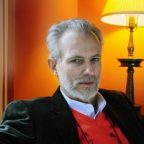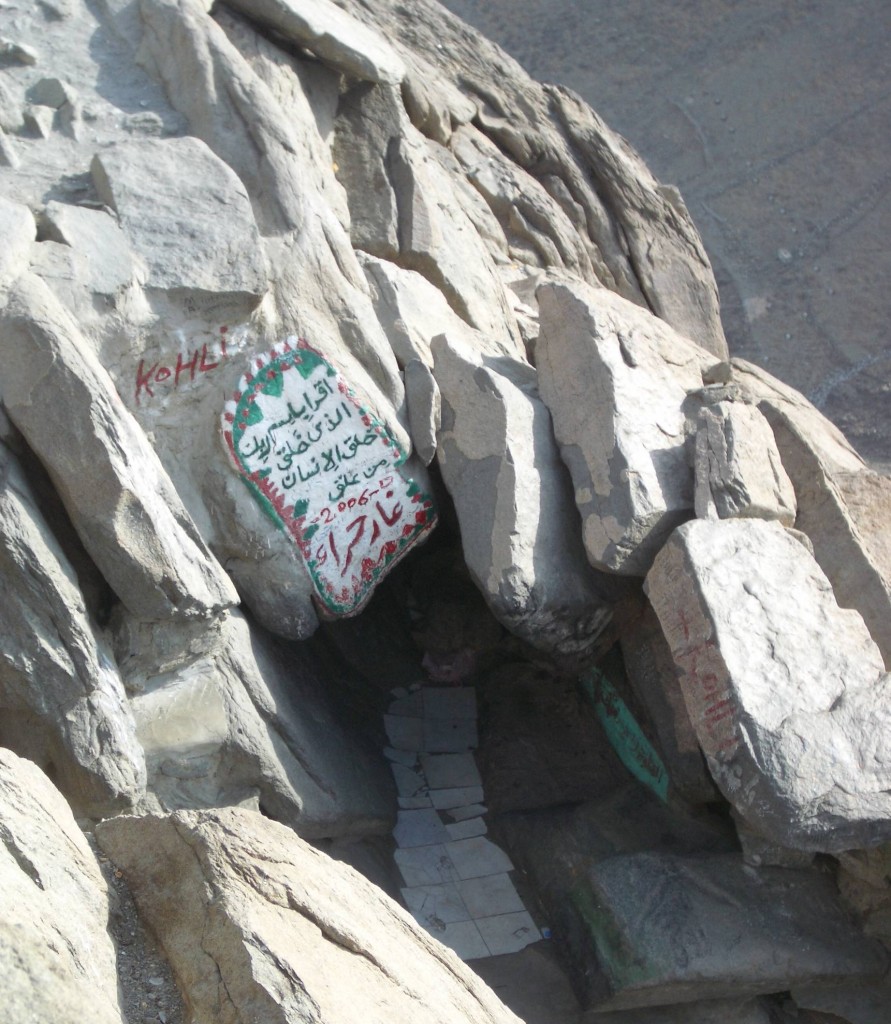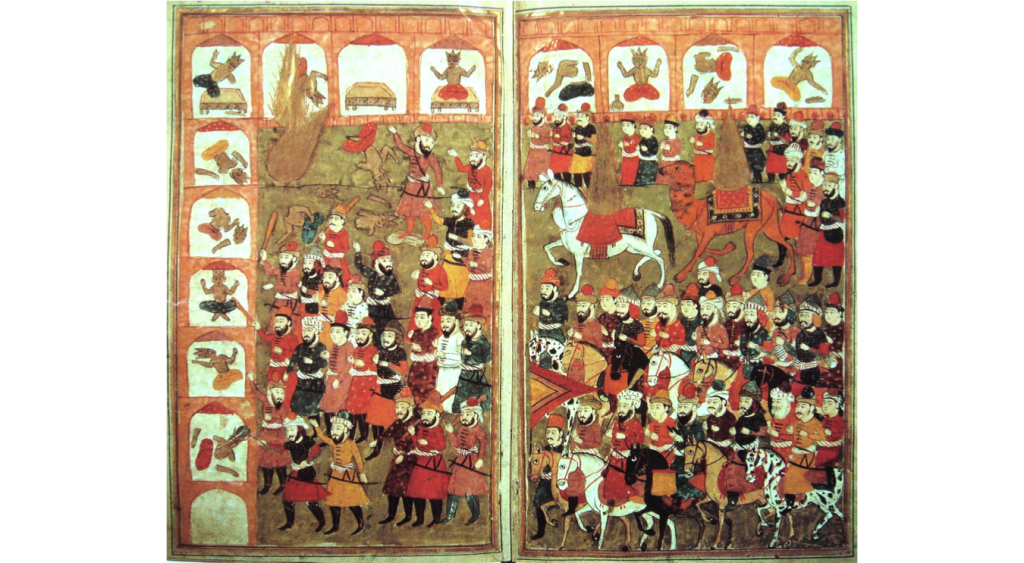The story of Islam’s beginnings have been told and retold countless times. The traditional narrative says that the Prophet Muhammad, an illiterate orphan from the town of Mecca, became a prophet of God and founded a community that conquered much of the known world in little more than a century after his death. But what do we really know about Muhammad and the time in which he lived, based on historical evidence? How has this led some to reinterpret the origins of Islam?
Our guest, Fred M. Donner from the University of Chicago, has spent much of his career studying the earliest history of Islam. He offers his hypothesis on what the early Islamic community may have looked like, and describes an exciting new find that may shed new light on an old puzzle.
Guests
 Fred M. DonnerProfessor of Near Eastern History and Director of the Center for Middle Eastern Studies at the University of Chicago
Fred M. DonnerProfessor of Near Eastern History and Director of the Center for Middle Eastern Studies at the University of Chicago
Hosts
 Christopher RosePostdoctoral Fellow, Institute for Historical Studies, The University of Texas at Austin
Christopher RosePostdoctoral Fellow, Institute for Historical Studies, The University of Texas at Austin
Your most recent book, Muhammad Among the Believers, is an attempt to reexamine the historical record about the beginnings of Islamic history, which you have described in various places as “obscure” or “enigmatic.” For many of our listeners these words may be surprising because there is obviously a very profound and powerful existing narrative about the origins of Islam. Coming from the lens of an historian, though, what do we really know about that earlier period in Islamic history?
Well, that’s a tough question because we don’t know as much from the historian’s perspective, that is, on the basis of real documentation, as we would like to know. We have, as you mentioned, a very powerful traditional narrative derived from the works of chroniclers and other writers within the Muslim community in the centuries after Muhammad’s life. But they are retrospective. We always have to wonder in what measure they are idealizing or have in some way altered “what actually happened,” as historians might like to say. When you try to go back to the time of the Prophet and the place of the Prophet himself, and the earliest years of the community, we really struggle because we don’t have a lot of documentation. There is some documentation, and we need to use it more than we have.
But, the fact is that we don’t have, for example, any letters—actual copies of letters from the Prophet that he wrote—the actual letter itself, not a copy of something that he may have written in a chronicle from a later time. We don’t have any other documents of that kind from his immediate entourage.
We don’t even have much from that particular time from the surrounding communities. The Byzantine historiographical tradition, for example, which was quite robust in the 5th century and the 6th century appears to dry up just as Islam appears on the scene, and doesn’t really come back online until 150 or 200 years later, just when the Muslim chroniclers are starting to appear, too.
So, we don’t really have a solid base of documentary evidence. There’s some, but not much.

Can you recap the salient points of what that traditional narrative entails, so that we can understand what the differences are when we talk about some of the historical revisionist interpretations?
The traditional narrative portrays Muhammad as having been born in the town of Mecca, in western Arabia sometime in the middle to latter part of the 6th century, in a pagan environment. Mecca was considered to have been occupied by people who were pagans or animists. According to the tradition, he began around the age of 40—something like 610 of the Common Era—to receive what he considered to be revelations of God’s words to him, enjoining him to be strictly monotheistic, recognizing that there was only one God—Allah in Arabic (????), which simply means God in Arabic.
This was important, that one should recognize God’s oneness, recognize that God was the creator of the world, that God is the source of all the good things that we enjoy in life as human beings, and therefore we owe God gratitude in the form of prayer, and almsgiving, and to take care of the less fortunate in society and so on. Various ritual injunctions were gradually imposed, or revealed, so regular prayer, almsgiving, fasting during the month of Ramadan every year during the day, and the pilgrimage to Mecca if you can do it. So, the story says that Muhammad began to receive these revelations, which contained this kind of religious preaching, emphasizing God’s oneness.
Then Muhammad ran into a lot of trouble with his fellow townspeople in Mecca, and so he and his followers took refuge in the city of Medina, a couple of hundred miles away, where he was invited to come as an arbiter. There, you get the first self-contained Muslim community, as they would consider it, where they were actually running their own affairs. In the final 10 years of his life, then, when he was in Medina, he pulled the town together and then began to bring other groups into the community that he was building, and ultimately was able to overcome Mecca and absorb it. So, we had a new statelet, a new polity growing in western Arabia.
Then he died in 632, according to the traditional dating. His followers then embark on a process of expansion and conquest, which takes over in a couple of years the entire Arabian peninsula, which is about the size of the eastern US, and then spreads out into the neighboring countries: Syria, Iraq, and then from there into Iran, northward into what is today Turkey, Egypt, and across the whole of North Africa. Very quickly, within about thirty to forty years, this new imperial state is constructed with people from western Arabia in the driver’s seat as the ruling elite. They speak Arabic, a language which had not been a politically dominant language before this time.
We have to remember, though, that the people who are leading the movement–we can call them Muslims (I think that’s problematic, we’ll talk about that in a moment)–but these people are a very small minority of the population in the first 75 years or so, they’re probably no more than 5, perhaps 10 per cent of the population. So, we have to understand that most of the great majority of the people in the Near East, in this great new empire, were actually Christians and Jews and Zoroastrians.
How have people interpreted and reinterpreted Islamic history in light of these gaps in the available documentation?
You mean modern historians?
Yes.
Well, the lack of documentation opens the door to an almost infinite variety of different hypotheses and speculation of all kinds. So, the range is enormous, from people who say the Prophet never existed, to people who say the Prophet did exist and that his career was probably not too different from the way it’s depicted in the traditional narrative. It’s possible, and it’s possible because we don’t have documentation to pin down specific things.

In your viewpoint, the thesis you’ve put together in Muhammad Among the Believers, you do take for granted that he existed and that certain events happened, but maybe with a different, less definite understanding of what Islam was at the time. Could you talk a little bit about that?
Yes. It seems to me that when you look at the text of the Qur’an, of course it’s the sacred scripture of Muslims, and tradition says that this is God’s word as it was revealed to the prophet Muhammad and then recorded, written down, and codified in the decades following the Prophet’s life, and as far as I’m concerned, the internal evidence is that that is a very early text. So, we can use it as a window into the mental world, we might say, of the early community of believers. And the things that strike me about the text are that, first of all, it’s directed at a group of people who call themselves Believers—mu’minun (??????)—they don’t call themselves Muslims yet. It seems their main identity category is as “Believers.”
When you look at other passages that describe who the Believers are, you find that it says that some of the Peoples of the Book—which is the general word for Christians and Jews, people who received God’s revelation in earlier “deliveries,” you might say, as it recognizes the Torah and the Gospels as earlier forms of revelation to earlier communities—the Qur’an says that the Believers include some Peoples of the Book who are “righteous ones.” Not all Peoples of the Book are considered among the Believers, but among the construction of this new community of Believers Muhammad seems to have started, at least according to the Qur’an, also seems to have include some people who are Christians and Jews who, in the standard Muslim view of the world, are different religions.
There seems to have been some sort of process whereby at the beginning, yes, the Qur’an preaches very strongly the oneness of God, and the need to be righteous in your day to day living, and the need to be mindful of the end of time and the last judgement when we will be rewarded or punished according to how we live, that is all very much there. But that still leaves an awful lot of fluidity about what are the actual boundaries of the community. I think that’s what had to be worked out over the first hundred years or so when Islam defined itself as a separate religious confession.
What time frame as Islam crystallized by, or had it taken on that definite form?
The traditional death date for the Prophet is 632, and it seems that the Islamic community in the sense that we understand it even today, was crystallizing by about 700. So, a couple of generations after the Prophet’s death it takes for this looser sense of community to give way to a much more defined sense of community as Muslims. And by Muslims, I think what we would say is that they define themselves as a community that focuses on the Qur’an as God’s word and the Prophet Muhammad as the vehicle for bringing God’s word to mankind.
And that also includes the definite separation from Judaism and Christianity by that point?
Yes, because, of course, Jews and Christians would not recognize Muhammad as an apostle, or a true prophet of God, or the Qur’an as God’s word.
What implication does a revised historical understanding of the beginning period of Islam have for someone who is, say, currently studying world religions or world history in a survey course, versus that traditional narrative?
Well, of course, they are the events that are the starting point for the origin of the whole Islamic tradition. So, one could say that one provides a basis for understanding that story, or those origins in a different way. My own sense is that it provides a more sociologically realistic way for understanding how this community emerged and spread so rapidly and succeeded so wildly in the world. I think if the movement had started as a very tightly defined movement that was brutally antagonistic to other religious traditions, it could never have succeeded in the same way. It would never have been acceptable to the vast majority of the populations of the near east who were, after all Christians and Jews and Zoroastrians. So, I think a kind of fluidity at the beginning was something that worked in the movement’s favor for spreading and becoming politically dominant over a large area. It was only over a long period, the first 75 or 100 years before the movement really defined itself as “Islam,” as a distinct religious confession, and many more centuries before a really contentious attitude developed with these other two religious groups.

Finally, your current project involves an Arabic papyrus that you discovered in the archives of the Oriental Institute. Can you tell us what you found and how it’s significant for your work?
Yes, it was very surprising and exciting for me to find it. I had actually spent a year on leave several years earlier looking at papyrus collections in Europe trying to find very early documents which would actually predate the crystallization of Islam out of the Believers’ movement. So, that would be documents from the 7th century that didn’t reflect a later understanding. I did find a few fragments, but not much that was very helpful.
Then, when I came back to Chicago and I was preparing for a class on paleography, I was looking over some of the papyri, and I came across this one which somehow has escaped everyone’s notice. It seems to be a very early letter. The script of it is what first struck me because the script is of a very early variety; some of the letter forms aren’t used after about 700, so this is what suggested to me that it was a very early document.
And then, when I began to read it, I found in it a whole bunch of names who are individuals in the orbit of the Prophet and his close companions. It seems to be dealing with the disposition of a relatively modest amount of money–not an insignificant amount, but it’s not a huge fortune. It’s describing basic day to day affairs in a family, perhaps. The letter is about how this small amount of money is to be divided: one dinar to this person, two dinars to that person, and so on.
As I say, it’s very striking because, first of all, some of the people mentioned in it are people from the time of the Prophet. One is one of the Prophet’s daughters, Umm Kultoum, who dies in 630. So if this is actually what it appears to be, it’s one of the oldest Arabic letters we’ve ever found, and it dates from the time of the Prophet himself.
On the other hand, the content is also striking because it does not conform to what a later forger might want to include in it. It does not mention the Prophet, it doesn’t mention Islam, it doesn’t really grind any religious axe, it doesn’t establish any claims to religious authority, political authority, social status, or wealth–so, why would anyone later on forge this thing? It’s very interesting.
It does include phrases that you find in other Arabic letters at the beginning and at the end, phrases that say things like, “I praise you God, other than whom there is no God,” a very nice monotheistic invocation, and at the end things like “peace be upon you and the blessings of God” – salaam aleikum wa rahmat Allah (???? ????? ? ???? ????) – this is something you find in many letters right up until today.
So, it appears that the writer lived in a community that was clearly monotheistic or oriented toward the worship of a single god, but there’s nothing in the letter that could be called distinctively Muslim. Or, for that matter, distinctively Jewish or Christian. There’s just reference to God, so mindfulness of God is something that’s there. So, it’s extremely interesting, because if it is, in fact, of the date that the content seems to suggest, that is from the 1st part of the 7th century, it’s extremely early and it gives us a window into this community that we don’t know much about on the basis of documentation.